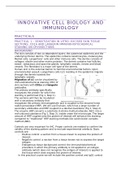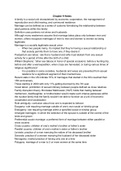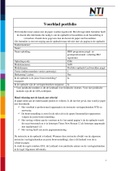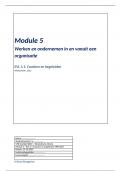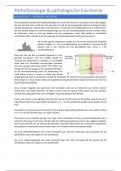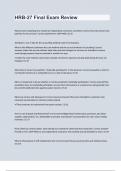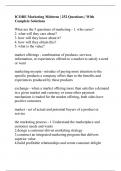Samenvatting
Summary Innovative Cell Biology and Immunology - Practicals notes
Notes and answers to all the questions of all the practicals given during the course 'Innovative Cell Biology and Immunology' of the minor 'Topics in Biomedical Sciences' at the VU. I followed this course during the Corona period, so most of the practicals were online. We had to hand in a short rep...
[Meer zien]
